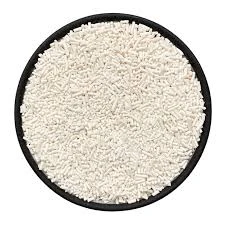
Food Additives to Avoid for Healthier Eating Choices
Food Preservatives to Avoid for Healthier Eating
The modern food industry relies heavily on preservatives to extend the shelf life of products and maintain their flavor, texture, and appearance. While some preservatives are deemed safe by regulatory bodies, others may pose health risks. For those seeking a healthier lifestyle, understanding which food preservatives to avoid is crucial. This article will discuss several common preservatives that are best left on the shelf.
1. Sodium Nitrate and Sodium Nitrite
Sodium nitrate and sodium nitrite are commonly used in processed meats like bacon, hot dogs, and deli meats to prevent botulism and maintain color. However, these compounds can transform into nitrosamines when exposed to high temperatures—or when consumed in significant quantities. Nitrosamines are linked to an increased risk of certain cancers, particularly colorectal cancer. Therefore, it’s wise to limit the intake of foods containing these preservatives.
2. BHA and BHT
Butylated hydroxyanisole (BHA) and butylated hydroxytoluene (BHT) are synthetic antioxidants found in various snack foods, cereals, and processed fats. While they help to prevent spoilage, studies have suggested a possible connection between BHA and BHT consumption and cancer in animal models. Due to these potential risks, many health organizations recommend minimizing BHA and BHT in your diet.
Potassium bromate is commonly used in bread and other baked goods to improve dough strength and rise. However, it is classified as a possible human carcinogen by the International Agency for Research on Cancer. Although some countries have banned its use, it remains legal in the United States. Opting for products labeled as potassium bromate-free can help mitigate exposure.
4. Sulfites
food preservatives to avoid

Sulfites are frequently used as preservatives in dried fruits, wines, and some processed foods. They prevent browning and spoilage. While sulfites are generally recognized as safe for most people, some individuals may experience allergic reactions, asthma attacks, or other adverse effects when consuming high levels. Additionally, sulfite sensitivity has become a growing concern, so it’s advisable for individuals with asthma or sensitivities to avoid foods with added sulfites.
5. Artificial Colors and Dyes
While not traditional preservatives, artificial colors and dyes are often added to food to enhance appearance and appeal. Ingredients like Red 40, Yellow 5, and others have been linked to hyperactivity in children and other health issues. Choosing natural colorings or simply opting for foods without added colors can be better for you and your family.
6. Trans Fats
Although trans fats are not preservatives in the traditional sense, they are often included in processed foods to improve texture and shelf life. These fats are associated with various health problems, including heart disease, and many countries have restricted their use. Checking food labels for partially hydrogenated oils can help you avoid trans fats and make healthier choices.
7. High Fructose Corn Syrup (HFCS)
While technically a sweetener rather than a preservative, high fructose corn syrup has become prevalent in processed foods and beverages due to its ability to enhance flavor and extend shelf life. Excessive consumption of HFCS has been linked to obesity, diabetes, and other metabolic disorders. Reducing your intake of products containing HFCS can support better health.
Conclusion
Being informed about food preservatives can significantly impact your overall health and well-being. While some preservatives do not pose immediate health risks, long-term effects and potential sensitivities should not be overlooked. Reading labels and selecting fresh, unprocessed foods whenever possible can ensure a healthier diet free from harmful substances. By avoiding the preservatives mentioned above, you can contribute positively to your health and that of your family.
-
Buy High-Quality Trichloroisocyanuric Acid for Sale | TCCA 90% SupplierNewsAug.30,2025
-
Pure Sodium Dichloroisocyanurate Dihydrate | Powerful DisinfectantNewsAug.29,2025
-
Industrial Chemicals: Quality & Purity for Every IndustryNewsAug.28,2025
-
Nitrile Rubber Honoring Strict Production StandardsNewsAug.22,2025
-
Aspartame Ingredients Honoring Food Safety ValuesNewsAug.22,2025
-
Fertilizer for Balanced Plant NutritionNewsAug.22,2025
-
Cyanide Gold Processing with High Purity AdditivesNewsAug.22,2025
Hebei Tenger Chemical Technology Co., Ltd. focuses on the chemical industry and is committed to the export service of chemical raw materials.
-

view more DiethanolisopropanolamineIn the ever-growing field of chemical solutions, diethanolisopropanolamine (DEIPA) stands out as a versatile and important compound. Due to its unique chemical structure and properties, DEIPA is of interest to various industries including construction, personal care, and agriculture. -

view more TriisopropanolamineTriisopropanolamine (TIPA) alkanol amine substance, is a kind of alcohol amine compound with amino and alcohol hydroxyl, and because of its molecules contains both amino and hydroxyl. -

view more Tetramethyl Thiuram DisulfideTetramethyl thiuram disulfide, also known as TMTD, is a white to light-yellow powder with a distinct sulfur-like odor. It is soluble in organic solvents such as benzene, acetone, and ethyl acetate, making it highly versatile for use in different formulations. TMTD is known for its excellent vulcanization acceleration properties, which makes it a key ingredient in the production of rubber products. Additionally, it acts as an effective fungicide and bactericide, making it valuable in agricultural applications. Its high purity and stability ensure consistent performance, making it a preferred choice for manufacturers across various industries.





